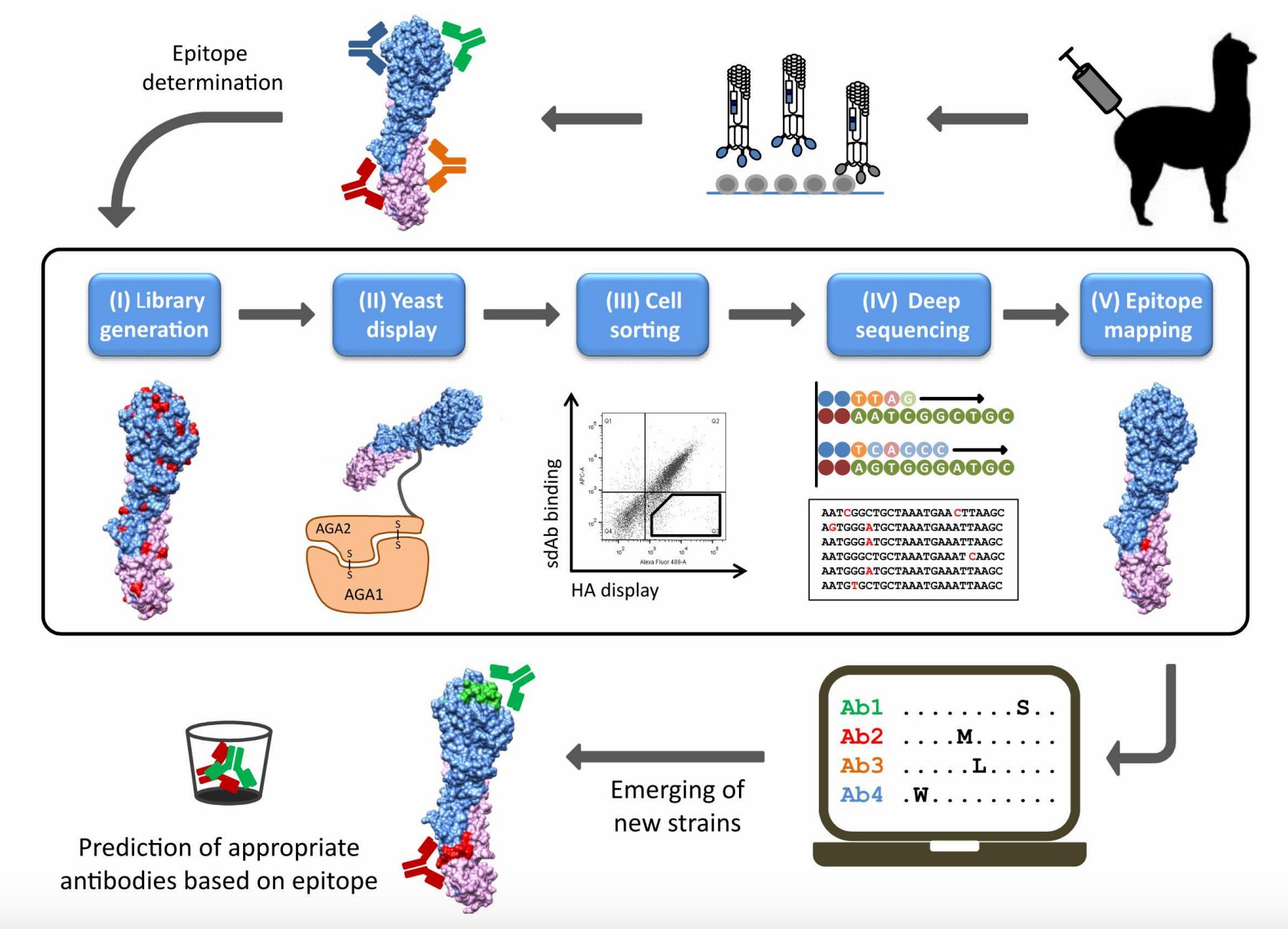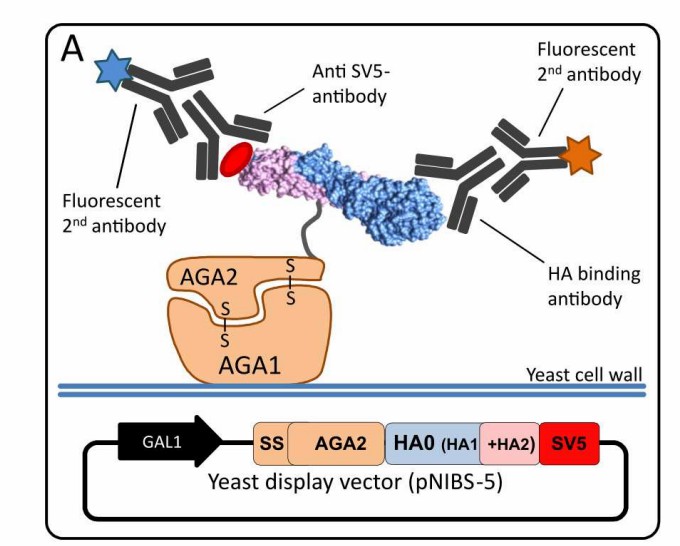B Cell-based Flow Cytometry Assay
Application of Flow Cytometry in Antigen/Antibody Discovery
Accurate antigen epitope information is crucial for antibody discovery. However, isolating antigenic epitopes from thousands of potential epitope candidates is time-consuming. Flow cytometry has been optimized to a high throughput, sensitive, and versatile technology for epitope binning by monitoring antibody-specific binding to antigen epitope. High throughput flow cytometry is broadly used for analyzing multiple parameters for a large number of candidates using single-cell suspension or particles. With the advanced flow cytometry platform, Creative Biolabs provides cancer epitope analysis service based on high throughput flow cytometry assays combined with various protein display techniques.
Flow Cytometry Assay Service at Creative Biolabs
Creative Biolabs offers a highly efficient and sensitive epitope analysis method using high throughput flow cytometry and fluorescent-labeled antibodies or beads to multiplex cell samples to characterize epitope and antibody binding interaction.
Workflow
The flow cytometry-based epitope analysis service includes peptide library generation, peptide display, flow cytometry analysis, and peptide sequencing.
 Fig.1 A general strategy for high-throughput epitope mapping of single domain antibodies to hemagglutinin using flow cytometry assay.1
Fig.1 A general strategy for high-throughput epitope mapping of single domain antibodies to hemagglutinin using flow cytometry assay.1
-
Construction Target Amino Acid Residual Mutation Libraries

-
Antigen Protein Display on Cells
Select the most proper expression style for your target protein from cancer cell lines, yeast cells, native expression in human cells, or create stable cell lines.
 Fig.2 Illustration of the yeast display technology.1
Fig.2 Illustration of the yeast display technology.1
-
High Throughput Screening Using Flow Cytometry
Antigen-specific antibodies production. Antibodies collected from antigen-immunized animals or diagnosis patients are used to bind the epitope peptide, and then a fluorescent-labeled secondary antibody is added to bind the first antibody.
Reducing non-specific binding. Validated reagents are used to reduce non-specific binding and non-specific control cell binding antibodies are deleted before the screening assay.
-
Features & Advantages of the Flow Cytometry Assay

The flow cytometry assay is suitable for early characterization and identification of epitopes. This valuable assay enables you to advance the best epitope-based drug for future application when combing with other epitope analysis assays, such as functional assay and next-generation sequencing. If you are interested in our services, please contact us immediately.
References
-
Gaiotto, T.; Hufton, S. Cross-Neutralising Nanobodies Bind to a Conserved Pocket in the Hemagglutinin Stem Region Identified Using Yeast Display and Deep Mutational Scanning. PLOS ONE. 2016, 11: e0164296.
-
Greaney, A. J; et al. A SARS-CoV-2 variant elicits an antibody response with a shifted immunodominance hierarchy. PLoS pathogens. 2022, 18(2): e1010248.
For Research Use Only | Not For Clinical Use


 Fig.1 A general strategy for high-throughput epitope mapping of single domain antibodies to hemagglutinin using flow cytometry assay.1
Fig.1 A general strategy for high-throughput epitope mapping of single domain antibodies to hemagglutinin using flow cytometry assay.1

 Fig.2 Illustration of the yeast display technology.1
Fig.2 Illustration of the yeast display technology.1

 Download our brochure
Download our brochure